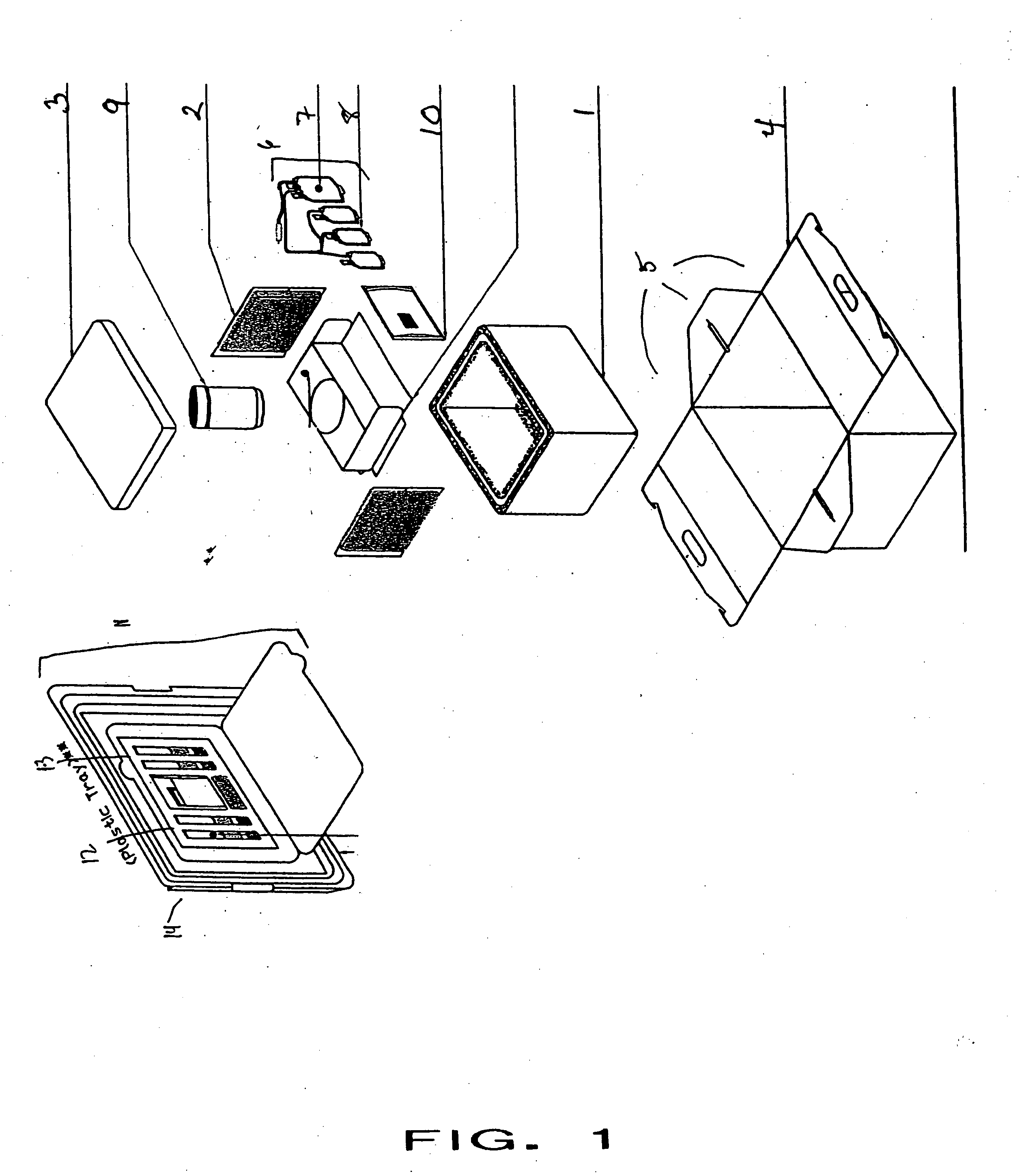Cord blood and placenta collection kit
a technology of placenta and blood, which is applied in the field of placenta collection kits, can solve the problems of insufficient quantities and populations of human stem cells capable of dividing into many cell types, inability to obtain sufficient quantities of human stem cells, and insufficient supply of stem cells. , to achieve the effect of preventing substantial temperature fluctuations, and preventing the loss of stem cells
- Summary
- Abstract
- Description
- Claims
- Application Information
AI Technical Summary
Benefits of technology
Problems solved by technology
Method used
Image
Examples
Embodiment Construction
[0018] The present invention provides an improved kit for the collection of placental and umbilical cord blood, and of the placenta, at the time of birth. The kit provides for increased convenience for the user, and for improved maintenance and stability of the collected material during shipping. The kit comprises all of the materials necessary for cord blood and placental collection at the time of delivery, and containers for shipping the collected blood and placenta to a cord blood and / or stem cell bank.
[0019] As shown in FIG. 1, the kit comprises an insulating container 1 and temperature controlling composition 2 (shown in one example configuration) that, under standard shipping and use conditions, maintains the contents of the kit within a range of about 15° C. to about 30° C. over the course of 48 hours post-collection. In one embodiment, the insulating container is a plastic insulating container. In a more specific embodiment, the insulating container is a Styrofoam™ box. The...
PUM
| Property | Measurement | Unit |
|---|---|---|
| internal volume | aaaaa | aaaaa |
| internal volume | aaaaa | aaaaa |
| volume | aaaaa | aaaaa |
Abstract
Description
Claims
Application Information
 Login to View More
Login to View More - R&D
- Intellectual Property
- Life Sciences
- Materials
- Tech Scout
- Unparalleled Data Quality
- Higher Quality Content
- 60% Fewer Hallucinations
Browse by: Latest US Patents, China's latest patents, Technical Efficacy Thesaurus, Application Domain, Technology Topic, Popular Technical Reports.
© 2025 PatSnap. All rights reserved.Legal|Privacy policy|Modern Slavery Act Transparency Statement|Sitemap|About US| Contact US: help@patsnap.com


